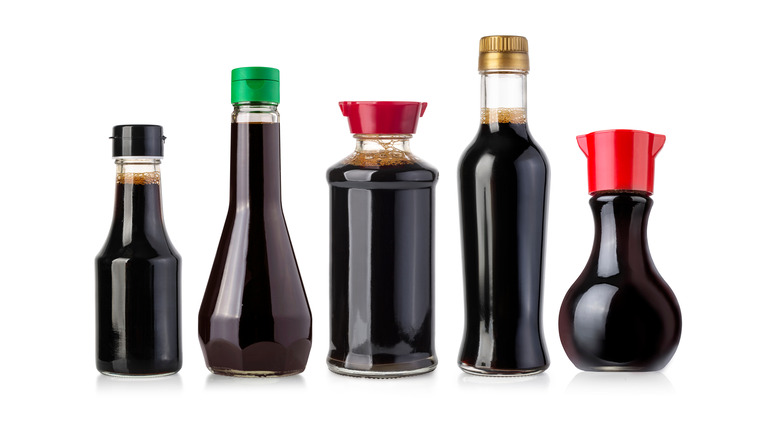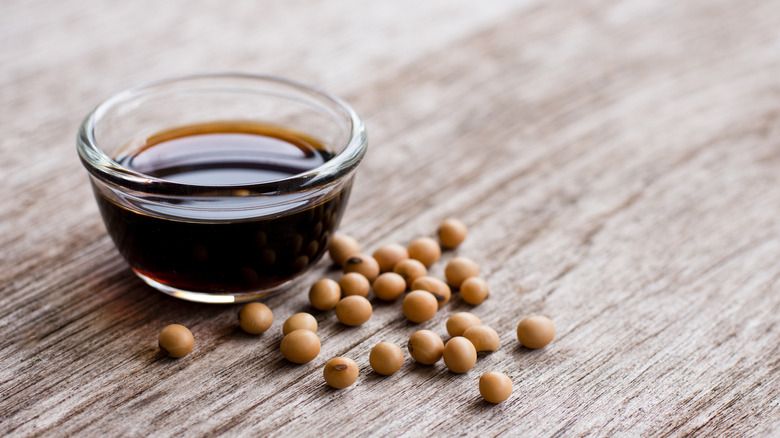The Ancient Predecessor Of Soy Sauce
True soy sauce fans know there is no substitute to the real deal. Other condiments may shine in their own arenas, but with its versatility and signature umami taste, everything that isn't soy sauce is second place.
According to soy sauce giant and household name Kikkoman, soy sauce is made from fermented soy beans, water, wheat, and salt. These simple ingredients are combined through a similar process to beer fermentation. They are blended together into a mixture called "koji" which ages for several months before being mashed and strained. From there, soy sauce is bottled and becomes the ideal dressing for stir-fry and lo mein noodles. It's also a sushi-lover's dream. There are even different types of soy sauce available on the market to satisfy every idiosyncratic gastronomic need. But soy sauce wasn't always soy sauce. The beloved condiment used to go by a different name and evolved from several different iterations before becoming the product that's likely sitting in your refrigerator right now. Introducing: The ancient predecessor of soy sauce.
Meet jan
Soy Sauce's ancestor was a sauce called "jan" (or, "jian," depending on the source, via Culture Trip). Like soy sauce, jan was a sauce with strong flavors made from pickled ingredients including a variety of fruits, vegetables, and seaweed. Although, like the sauce's name, the historical record of its ingredients also varies from account to account. During the late Zhou dynasty (1046-256 BCE), reports Culture Trip, jan was a paste made from fermented meat. By the Han dynasty (206 BCE-220 CE), it states, the ingredients shifted away from meat and toward grains since grain was easier to harvest and therefore more accessible. Jan's grain base (a combination of wheat, rice, and soybeans) is considered the defining foundation that evolved into today's soy sauce.
When soy sauce was first made in Japan during the 13th century, it was called "hishio." Unlike the Chinese jan, Japanese hishio was more comparable to a combination of soy sauce and miso paste (per Soy Info Center). Around this time, a similar salted fermented soybean paste called "douchi" was gaining popularity, reports Culture Trip. In 1294, when the Zen monk Kakushin began teaching the Japanese how to make miso paste using the Chinese technique, Kakushi noticed that the runoff liquid from the hishio had a pleasant taste. This liquid was what became the soy sauce so many modern consumers know and love. During the Song dynasty (960-1279), soy sauce took the Chinese name "jiangyou," which it is called today. Chicken yakitori, anyone?

